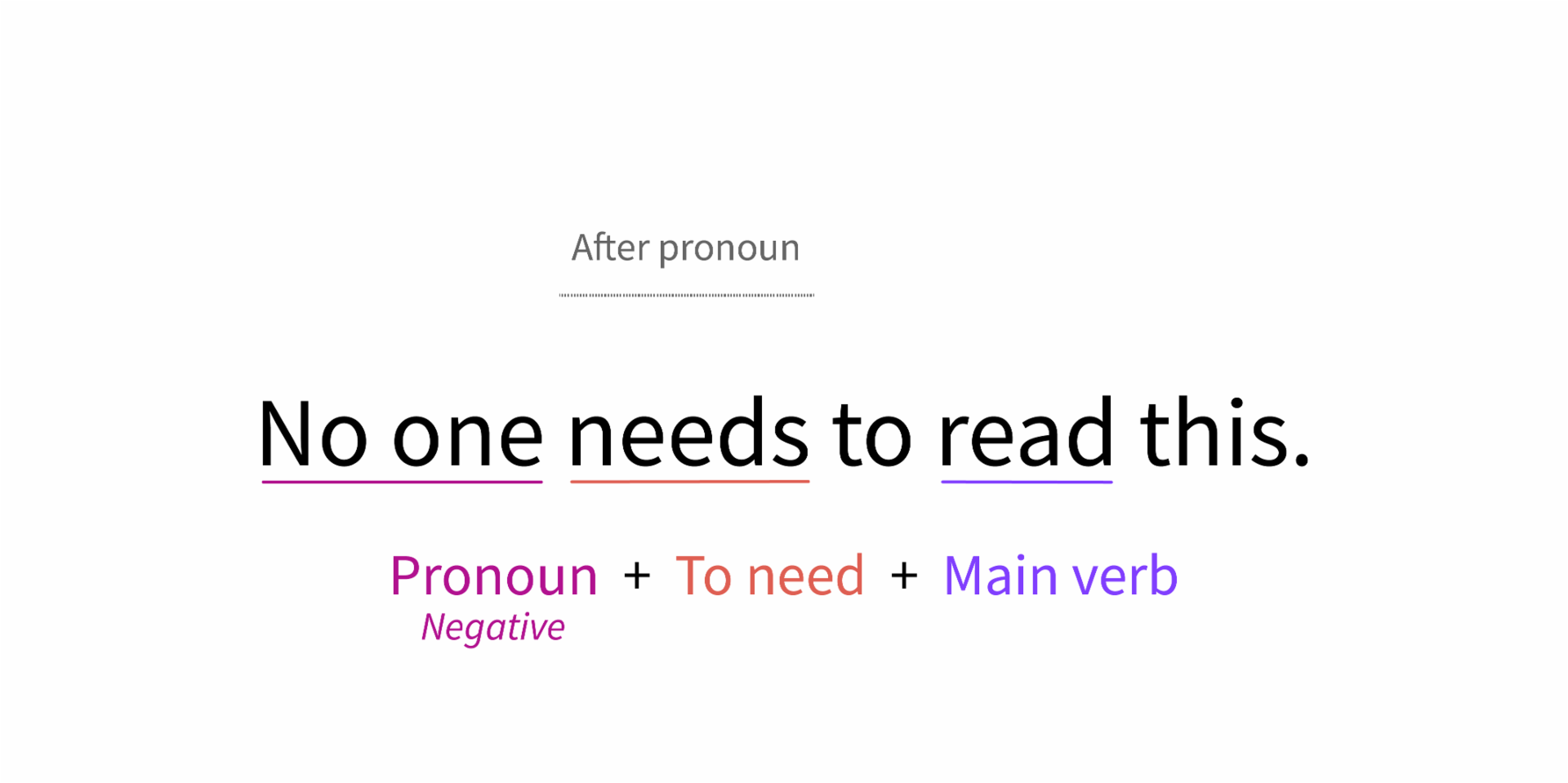
Verb "to need"
These two verbs might have a similar use, but each one has a proper use according to its context and the speaker's needs. Let's learn them.
This is a semi-modal verb. This condition is given because it sometimes works as a modal verb and sometimes as the main verb.
- As the main verb:
(To need something). Need is the principal verb in the sentence. For example:
"I need some water." - As a modal verb:
Look at the following example:
"I need to sleep more."
(Have to) In this case, sleep is the principal verb in the sentence and need clarifies the intent of the sentence.
Affirmative form
Is not common to use to need as a semi-modal verb in this form. However, is common to use it in sentences that include negative pronouns like nothing, no one, none and nobody. For example:
"Nobody needs to know where I came from."
Need is placed in the sentence in this form:
There is no need to use another modal verb in the same sentence where need is being used as a semi-modal verb.
Negative form
Need is mostly used in negative sentences where it is indicating that there's no obligation or necessity to do something.
To create the negative form, not must follow need in the sentence. Remember that its contracted form is needn't. Like this:
"You needn’t worry."
Interrogative form
This form is not common and is used when:
- You're speaking in very formal contexts:
"Need they to join us?"
- Something is necessary or very important to communicate.
When to use "need"
- To show that there is no obligation to something.
"You needn't buy that for me." - To express that there is no obligation with something in the past. In this case, the auxiliary past verb "did" is used.
"You didn't need to buy that for me." - To refer to events that happened but were unnecessary from the point of view of the speaker.
The sentence structure for this case is: needn't + have + verb(ed).
"He needn't have worked that much on my project."
To keep in mind
Most of the time, need is followed by to and changes according to its conjugation with person, number and tense, like this:
It is also used when followed by an -ing clause or a noun clause. In this case, it is required to use the auxiliary verb do or does. For example:
- Noun clause: Mark doesn't need a new car.
- -ing clause: I don't need a new haircut.
Need is followed by to when is conjugated with another verb. For example:
"I need to talk with Mrs. Morrison."








